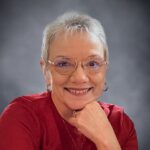Festival Etiquette
Proper appearance and demeanor on stage and in the audience make a powerful statement about your ensemble during formal performances.
Performing at a festival is so much more than “performing the music.” You should have high expectations for appearance and demeanor for performers as well as the audience. Here are some tips for your next formal performance.
Stage Etiquette
The adjudication begins the moment the first student steps onto the stage. Plan how to “take the stage” and rehearse it repeatedly. Once students are on stage, they should not speak to one another unless absolutely necessary. Smiling at the audience reflects a very pleasant demeanor, but laughing on stage is never appropriate.
Practice taking and leaving the stage quietly. The clunking of shoes is not the best way to start the performance. Ensure that musicians know exactly where their chairs are and have them stand in front of them until given the cue to sit.
For choral ensembles, row one should enter first, and the person in the center of that row should stop in the center of the riser. His or her position will help set the remainder of the ensemble.
The quick tuning check of the ensemble is absolutely appropriate before the playing of the first selection as well as in between selections as necessary. Just be sure that the tuning is timed out appropriately.
Finally, ensure that students understand the formality of the introduction of the conductor. How will this happen? Will the director take the stage, then get introduced, or does the conductor get introduced, then walk onto the stage? What happens next? Either way, the ensemble must know the procedures, so that they may respond properly.
Performance Etiquette
Students should understand that when the conductor turns around to bow and acknowledge the applause of the audience that he or she is accepting the applause on behalf of the ensemble. Thus, students should be taught to look at the director or audience and smile during the applause.
Do not allow students to turn to the next selection during this time. Students should bring up the next selection only after the director has turned back to face the ensemble. In jazz bands, soloists should definitely acknowledge applause with a smile or nod when the audience applauds for the solo.
Audience Etiquette
Be sure to address audience etiquette well ahead of time and often. If students know what the expectations are, they will behave appropriately in concert settings themselves, plus you can ask them to share this information with those who are attending the performance in support.
This information can be reinforced by having audience guidelines printed in the festival program. Music education means educating everyone — administrators, parents and even the audience — so addressing etiquette in the program by sharing it from the student perspective is a great way to reinforce the expectations.
Here are notes from a sample program that you can use or adapt:
The abilities demonstrated at tonight’s festival include audience etiquette. The following guidelines are expected to be observed while students are listening to other performances at all formal concert settings.
- Sit tall in your seat and give your undivided attention to the performing ensemble.
- Be a quiet, still listener and focus on the exemplary elements of the performance.
- Remain seated during the entire performance, including between selections, of each ensemble.
- Turn off cell phones and put them away.
- Wait until after the ensemble’s final selection when a “Kodak moment” will be provided to take photographs.
- Although we encourage all family members to attend all performances, we respectfully ask that you exit the hall quickly and quietly if your young child chooses to become an “active” participant in the concert.
This article originally appeared in the 2018 V1 issue of Yamaha SupportED. To see more back issues, find out about Yamaha resources for music educators, or sign up to be notified when the next issue is available, click here.
















